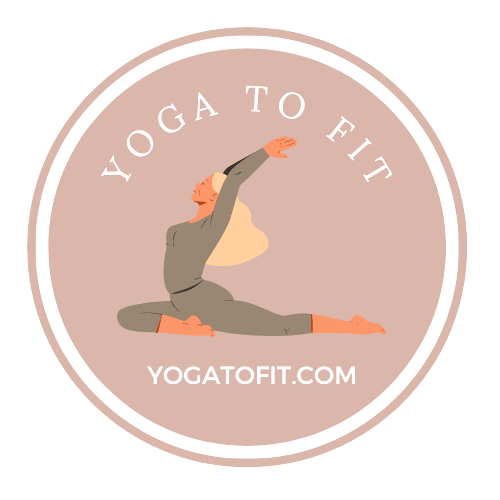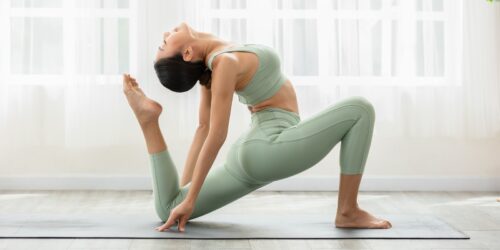Using Yoga Blocks Effectively In Your Practice
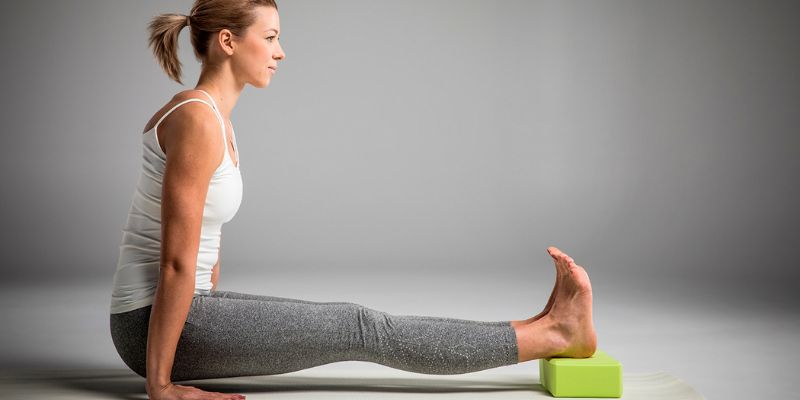
Are you looking for yoga blocks to enhance your practice? These are one of the best yoga props that can be used for different yoga poses. Whether you are a experienced practitioner or a beginner, yoga blocks can enhance your practice and help you achieve deeper poses and increased flexibility.
People use different kinds of yoga props, such as yoga blocks, straps, blankets, wheels, chairs, and mats to enhance the effectiveness of their practice.
In this article, we will explain what yoga blocks are, their benefits and how you can use blocks for different asanas.
What are Yoga Blocks?
Yoga blocks are supportive tools to help practitioners with various positions. These blocks are rectangular in shape, vary in size, and are typically constructed of foam, cork, or wood. Their major objective is to offer stability, support, and extension so that yogis can achieve perfect alignment and advance in their practice more quickly.
Benefits :
Enhancing Alignment: It can help you achieve proper alignment in poses where your flexibility or strength may be limited. Placing a block under your hand or foot can provide the necessary elevation, allowing you to comfortably hold the pose while maintaining proper form.
Deepening Stretches: When performing stretches or forward folds, blocks can bring the ground closer to you, reducing strain and enabling you to go deeper into the pose gradually. This added support helps to prevent overstretching and potential injuries.
Building Strength: Yoga blocks can be utilized as tools to increase strength and stability. Incorporating blocks into poses like lunges or planks challenges your muscles by adding height or instability, resulting in a more intense workout.
Injury Prevention: Beginners and individuals recovering from injuries can greatly benefit from yoga blocks. By providing additional support and stability, blocks minimize strain on vulnerable areas, such as the wrists, knees, or lower back, allowing practitioners to perform poses with confidence and reduced risk of injury.
Which yoga blocks are best for you?
Different types of yoga blocks help you determine which ones are best suited for your needs and preferences.
Cork Blocks
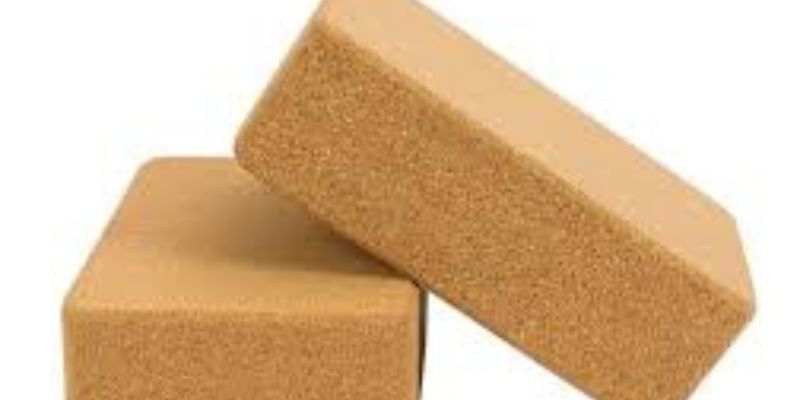
Cork blocks are popular among yogis due to their natural and eco-friendly properties. These are made from sustainable cork oak trees, these blocks offer firm support and stability. Cork blocks are known for their durability and provide a solid foundation for various yoga poses. The natural texture of cork offers excellent grip, even in sweaty conditions, making them ideal for dynamic and challenging sequences. Additionally, cork blocks are slightly heavier than other materials, offering added stability during balancing poses.
Foam Blocks
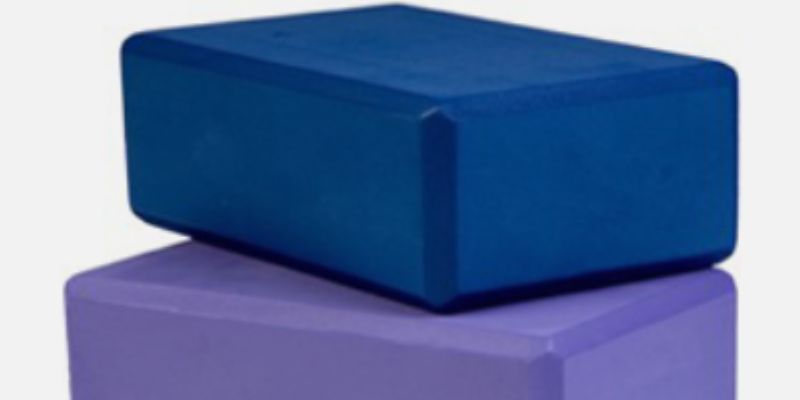
Compared to cork blocks, foam blocks are lighter and have a softer surface. They are great for novices or practitioners looking for soft support because they are frequently built from high-density foam and provide a more forgiving support. Foam blocks’ plushness is very useful for therapeutic and restorative procedures where comfort is essential. Additionally, these blocks are simple to hold and may be stacked to change the height to suit your needs. Foam blocks can be the best choice if you want a cushioned and adaptable option.
Wood Blocks
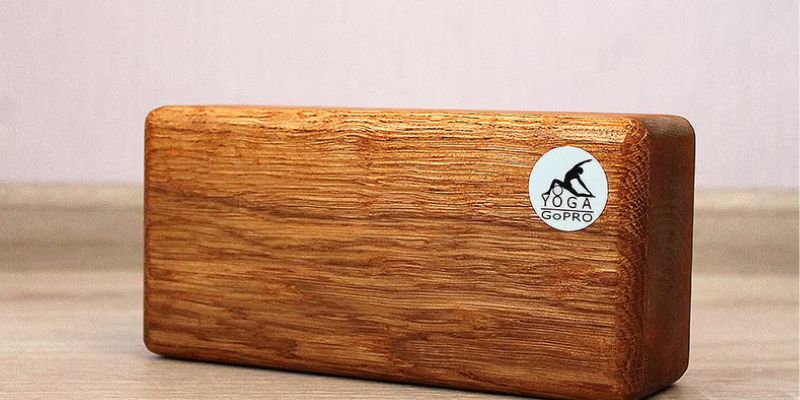
Wood blocks, which are typically made of bamboo or birch, provide a strong and durable base. They strike a mix between stability and portability being slightly heavier than foam blocks but lighter than cork blocks. Blocks made of wood offer a stable surface and a rustic aesthetic charm. They are easy to grasp thanks to their smooth texture, and yogis who appreciate a more conventional and grounded experience frequently choose them. Wooden blocks can be your best option if you value the aesthetic charm of organic materials and want a reliable yet portable option.
Recycled Blocks
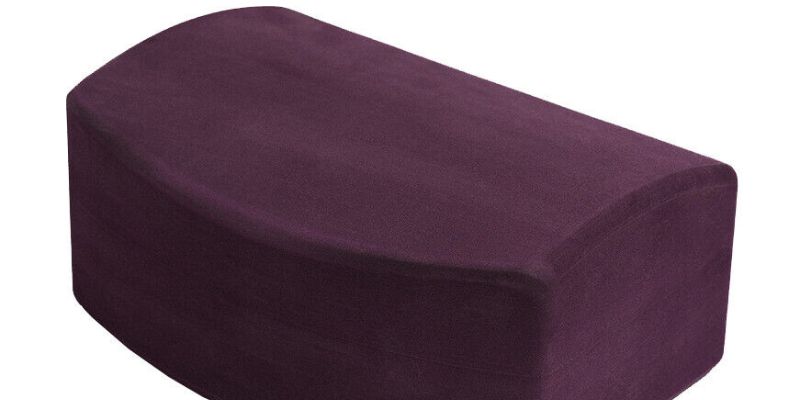
Recycled blocks provide an environmentally friendly and morally right option for those who care about the environment. Frequently built from recycled foam or other environmentally friendly components, these blocks. They support recycling activities adequately while minimising waste and encouraging waste reduction. The density and texture of recycled blocks vary, providing varying degrees of stiffness and grip. They are a fantastic choice for yogis who care about the environment and want to improve the world without sacrificing quality.
How to Use Yoga Blocks
They can greatly enhance your yoga experience by providing support, stability, and accessibility in various poses. In this article, we will delve into the benefits of using yoga blocks and explore different techniques to incorporate them into your practice.
Techniques for Using Yoga Blocks
Height Variation: Most yoga blocks come in different sizes or have beveled edges, offering multiple height options. Experiment with different heights to find the most suitable one for each pose, allowing for progressive deepening of your practice.
Stability and Alignment: When using yoga blocks for support, ensure they are stable and placed securely on a non-slip surface. Align the blocks parallel to each other and keep them at shoulder-width apart for optimal stability.
Modification and Adaptation: Yoga blocks can be used to modify poses according to your body’s needs. If a full expression of a pose feels challenging, use blocks to make the pose accessible while still maintaining proper alignment and engagement.
Using Yoga Blocks for Various Poses:
Yoga blocks are versatile props that can be used in a wide range of yoga poses to enhance your practice. Let’s explore how you can use yoga blocks for various poses:
Downward Facing Dog
- Place two blocks shoulder-width apart at the top of your mat.
- Position your hands on the blocks, fingers spread wide.
- This modification reduces strain on the wrists and allows for a more comfortable stretch in the shoulders and hamstrings.
Half Moon Pose
- Start in Triangle Pose (Trikonasana) with your right hand on a block placed inside your right foot.
- As you lift your left leg off the ground, maintain balance and stability by pressing into the block.
- The block provides support and helps you find proper alignment in this challenging balancing pose.
Bridge Pose
- Lie on your back with knees bent, and place a block under your sacrum.
- The block supports your lower back, allowing for a more gentle and restorative version of the pose.
- You can adjust the height of the block to find the most comfortable position for your body.
Camel Pose
- Kneel on the floor with your knees hip-width apart and place a block vertically between your feet.
- As you reach back to perform the backbend, press your hands into the block for support and stability.
- The block helps you maintain balance and prevents strain on the lower back.
Seated Forward Fold
- Sit on the floor with your legs extended and place a block in front of your feet.
- As you fold forward, rest your forehead or chest on the block for support.
- The block helps lengthen the spine and allows for a deeper stretch in the hamstrings.
Extended Triangle Pose
- Step your feet wide apart, and place a block on the outside of your front ankle.
- Rest your hand on the block as you extend your other arm overhead.
- The block provides support and stability, allowing you to maintain proper alignment in the pose.
Frequently Asked Questions
Q: Can I use yoga blocks if I have injuries or limitations?
A: Yes, yoga blocks are excellent tools for individuals with injuries or limitations. They provide support and make poses more accessible. However, it’s crucial to consult with a qualified yoga teacher or healthcare professional to ensure you’re using the blocks safely and effectively.
Q: How many yoga blocks do I need?
A: It’s helpful to have at least two blocks to provide stability and balance. However, you can start with just one block and gradually add more as you advance in your practice.
Q: Can I use alternatives to yoga blocks?
A: Yes, if you don’t have yoga blocks, you can use alternatives such as thick books, folded blankets, or pillows. However, keep in mind that these alternatives may not provide the same stability and support as yoga blocks.
You May Also Like:
Conclusion:
Regardless of your level of experience, yoga blocks are useful tools that can improve your practise. They encourage appropriate alignment, stability, and flexibility, opening up poses and enabling longer stretches.
Yoga blocks can help you get the most out of your practise, whether you’re a beginner or an experienced practitioner.
In order to feel the change yoga blocks can bring to your practise, think about including them into your routine the next time you roll out your mat.
